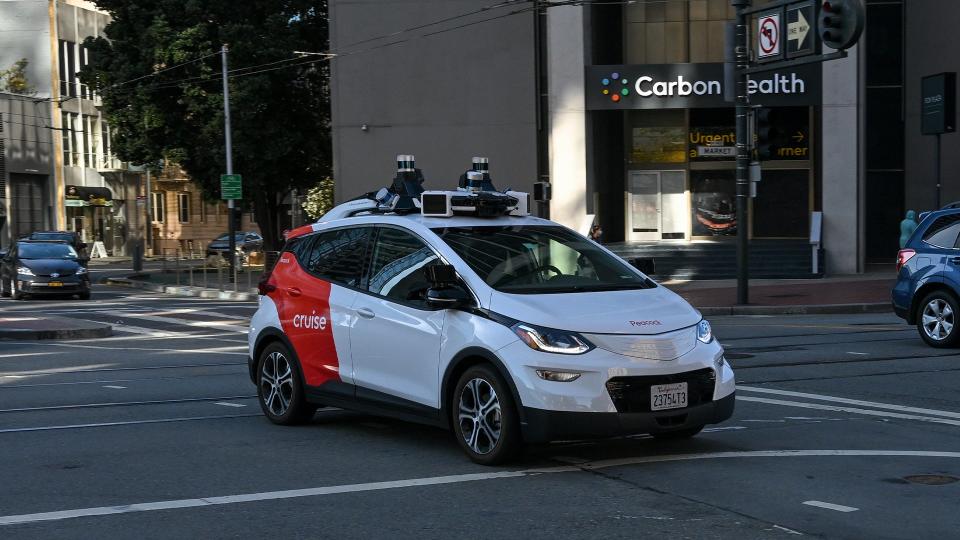GM's Cruise Robotaxis Got Free Rein in San Francisco Only to Have It Taken Away

Just days after Cruise and Waymo received seemingly unfettered access to the streets of San Francisco, Cruise has agreed to comply with a request from California officials to reduce its fleet of autonomous vehicles by half. The move follows a series of crashes involving Cruise robotaxis—one of which saw a Cruise vehicle strike a fire truck—as well as an ongoing pattern of traffic jams.
The California Department of Motor Vehicles, which oversees the testing and deployment of autonomous vehicles in the state, called for Cruise to cut its operations by half on Thursday. Cruise voluntarily complied with the request, agreeing to operate no more than 50 robotaxis during the day and 150 at night until the DMV concludes its investigation into how one of the GM subsidiary's autonomous Chevrolet Bolts collided with a fire truck last week.
https://twitter.com/scottbudman/status/1693684555939709079
While the DMV is looking into the incident involving the fire truck, Cruise has already issued its own statement on the matter. According to the company, the fire truck entered the taxi's lane of travel against the flow of traffic in order to bypass a red light. However, the fire truck was not immediately identified by the Cruise vehicle due to its line of sight being occluded by buildings. The Bolt initiated an emergency braking maneuver when the collision risk was identified, but it was too late and the car could not avoid the crash.
Another crash involving a Cruise vehicle occurred shortly thereafter in the early morning hours of Friday. Cruise said one of its vehicles was proceeding through a green light when a car ran an adjacent red light. The Bolt recognized the oncoming vehicle and applied its brakes, but much like in the situation with the fire truck, the action did not prevent a crash. The driver that ran the light was found to be at fault.
A week earlier, as many as 10 Cruise-operated Chevy Bolts froze in an intersection and created a traffic jam (something we've seen time and time again). Another Cruise vehicle drove into wet concrete and became stuck elsewhere in the city several days later.
https://twitter.com/Cruise/status/1692491370642997444 https://twitter.com/AIDRIVR/status/1693683263079055675
The California Public Utilities Commission (CPUC) granted Cruise and Waymo permission to expand their hours of operation and charge for rides around the clock on August 10th. That's less than two weeks ago, and prior to the above-mentioned incidents leading up to the state DMV's request for Cruise to limit its services. At the time, CPUC Commissioner John Reynolds said that the group did not yet have the data to judge autonomous vehicles against human-driven counterparts, though this series of traffic episodes bolsters the public opposition that occurred before the approval.
"Safety of the traveling public is the California DMV's top priority. The primary focus of the DMV's regulations is the safe operation of autonomous vehicles and safety of the public who share the road with these vehicles," said the DMV in a statement. It later continued: "The DMV reserves the right, following the investigation of the facts, to suspend or revoke testing and/or deployment permits if there is determined to be an unreasonable risk to public safety."
It's not yet clear if the DMV will take any corrective action toward Cruise following the outcome of its investigation. It's hard to ignore just how poorly timed the fire truck collision was, coming hot on the heels of the company's expanded privileges, but the various incidents documented since certainly haven't supported Cruise's case for growth.
Got a tip or question for the author? Contact them directly: rob@thedrive.com

 Yahoo Autos
Yahoo Autos 